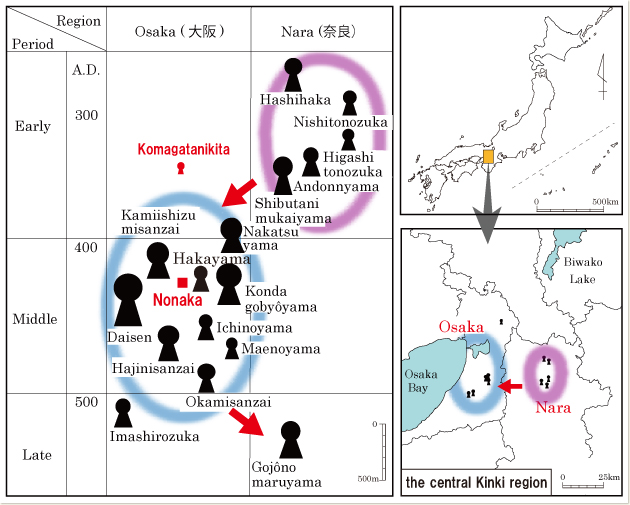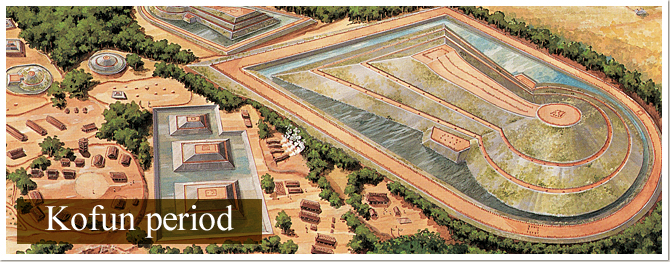Relation to the Kawachi dynasty theory
Kofun are an important source of data for studying the formation of the ancient state in Japan. The Mozu-Furuichi Tomb Clusters were built on the Osaka Plain in the 5th century, but some of the largest zenpō-kōen-fun had already been built in the Nara Basin from the middle of the 3rd century to the 4th century.

Large-scale kofun built in the central Kinki region
(modified from a diagram originally produced by Dr. Shiraishi Taichirō)
This shift in the location of kofun has long been a subject of controversy among archaeologists and ancient historians in Japan
While some scholars posit that the base of government remained in the Nara Basin and only the kingly burial grounds were relocated, others, interpreting the location of the burial mounds as signifying a group’s home territory, assert that a shift in power between the Nara Basin and the Osaka Plain lay behind the migration of the tombs.
Scholars who advocate that only the cemetery area shifted argue that
Osaka was undeveloped prior to the 5th century and that no influential
power existed there.
But was this really the case?
Let us take a look at the excavation of Komagatanikita Kofun, which was built in the 4th century in present-day Habikino City, Osaka, to learn about local influential figures that lived on the Osaka Plain before the Mozu and Furuichi kofun appeared on the scene.





